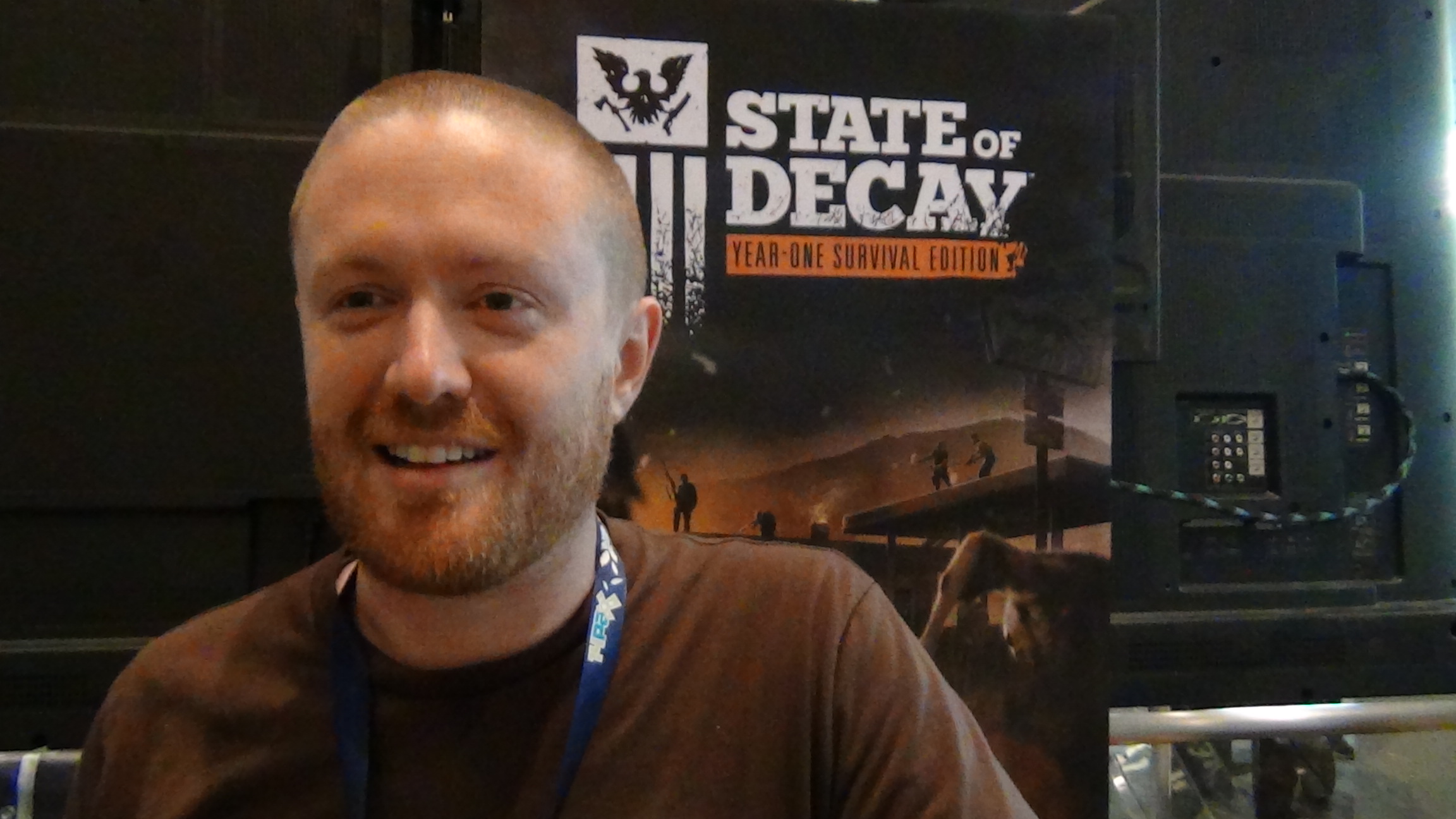By Jeremy Hannaford (Contributor) – Email
Print Edition: September 10, 2014

Geoffrey Card is a lead game designer for Undead Labs. He has worked on PC version of State of Decay and expansion packs Breakdown and Lifeline. Jeremy Hannaford had the chance to ask him about his career as a game designer at PAX 2014.
What got you into gaming?
My early exposure to gaming was largely due to my father writing for computer magazine Compute! in the ‘80s and bringing home a ton of free games. My “job” at that age was to play every game that came in, then demonstrate them to my dad so that he could write reviews. That got me to start looking at games critically, and questioning how they were designed, rather than just playing them passively.
The game that was probably most formative for me as a future game designer was the original Deus Ex. There was this moment when I tried something that I believed was impossible — rescuing my brother from the men in black — and discovered that there was an entire parallel storyline based on that decision. That opened my mind to the potential of games as a unique storytelling medium that can take advantage of its audience’s rebellious desire to make their own choices, rather than restricting those choices in order to preserve authorial intent.
Are you a designer or programmer?
I’m a designer. That means my job is to determine how the game is supposed to work — the rules, systems, controls, et cetera that define the game on a fundamental level — and then to fill in the gaps with details.
You said that before you went to PAX 2012, you had a dream of having a zombie game with survival-like qualities State of Decay has. What was the full premise of your idea when you first had it?
I was working on an idea for a mobile game that involved plotting a road trip across zombie-infested territory with a group of survivors, but the actual zombie combat was secondary. The game was really about survival, community, and making choices to keep your people alive.
You saw State of Decay two years ago at PAX 2012. How did it feel to see your dream game have come alive?
It’s actually a great feeling when you discover that someone else is inspired by the same sort of fantasy that inspires you. When I saw State of Decay, I had this immediate sense of kinship to the folks at Undead Labs, because when they went into the zombie apocalypse genre, they found the same niche I did — an experience that wasn’t just about the moment when the zombies attack, but also all the moments after that, as people figure out how to keep going in a new, much harsher world.
Did you talk with any of the developers at Undead Labs at PAX 2012? Did those conversations have a hand in you getting to work for them?
After getting to know a few people from Undead Labs at PAX 2012, I kept talking to them, off and on, over emails and lunches for almost a year. Undead Labs is very careful about hiring new people — the development environment in this place depends heavily on having a culture of veteran developers who work together well and trust each other, and trust takes time. It was the following July when I actually had my final interview, and they made me an offer.
What is your role with the company and what have you brought to State of Decay?
I guess my official role is as the lead designer on the State of Decay franchise — though I’m always uncomfortable with titles, especially ones that imply leadership. Luckily, Undead Labs is about the most un-hierarchical place I have ever worked. Everyone here is equally invested in what we’re building.
What I’ve done so far is handle a lot of the design work on the PC version of the game, the Breakdown and Lifeline expansions, and the Year One Survival Edition. I’ve also worked on several of the improvements that were patched into the original game, like followers, vehicle inventories, and balancing the search tables. We’re big believers in supporting our games after people have been kind enough to buy them.
How does it feel having obtained your dream job for your dream game?
It’s actually kind of surreal. I’ve spent a lot of my 12-year career in the game industry imagining the games that I really want to make … and now when my brain wants to go through that process, it comes up empty, because there really is nothing more interesting to me than the project that’s right in front of me.
What advice would you have for those who are looking to get into the industry?
All the industry people I know have different stories about how they got in. Particularly people who have been in the industry longer than I have — there were no college programs that fed into the game industry back then, and there was very little in the way of formal training. It was just passionate people finding ways to do the thing they loved on their own, and occasionally bumping into other people like them and getting hired.
Really, it’s still like that in a lot of ways. There are college programs that can help, but none of them is a guarantee that you’ll find a role in the industry. What matters isn’t the diploma, but what you can create. I’d advise aspiring game developers to start making games now, using whatever means they have at their disposal. Loving to play games is one thing, but to work in the industry, you need to love making games even more.

